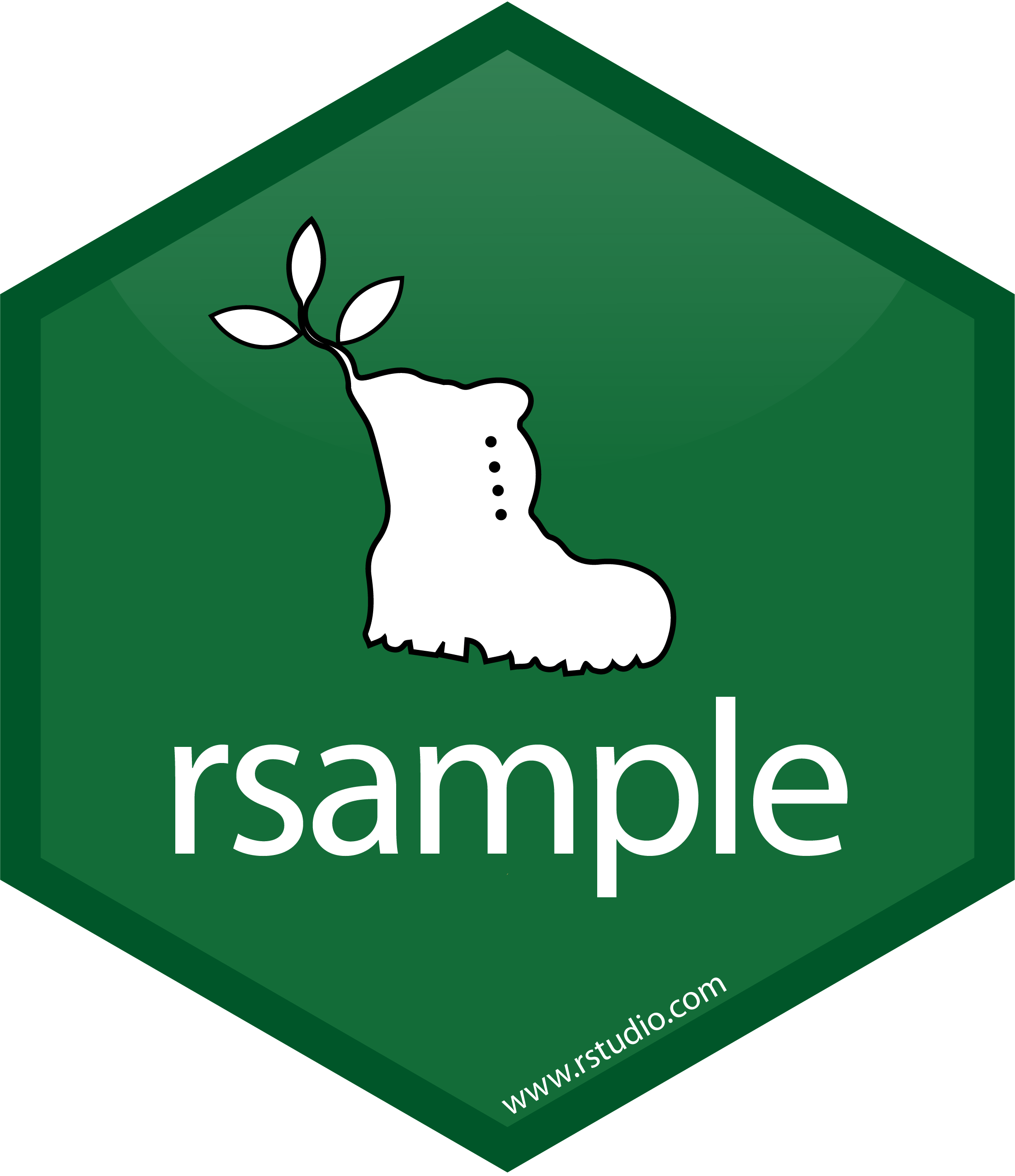library(tidymodels)
library(forested)
forested_ga
#> # A tibble: 10,937 × 19
#> forested year elevation eastness roughness tree_no_tree dew_temp
#> <fct> <dbl> <dbl> <dbl> <dbl> <fct> <dbl>
#> 1 Yes 2007 14 0 0 No tree 13.9
#> 2 Yes 2007 66 -53 10 Tree 13.8
#> 3 Yes 2006 59 -82 6 No tree 13.5
#> 4 Yes 2007 116 -78 20 Tree 12.3
#> 5 Yes 2006 283 63 13 Tree 10.0
#> 6 Yes 2007 250 63 14 Tree 10.8
#> 7 Yes 2007 58 31 1 No tree 13.8
#> 8 Yes 2023 140 56 11 Tree 12.2
#> 9 Yes 2024 118 72 17 Tree 12.2
#> 10 Yes 2024 217 -46 13 Tree 12.4
#> # ℹ 10,927 more rows
#> # ℹ 12 more variables: precip_annual <dbl>, temp_annual_mean <dbl>,
#> # temp_annual_min <dbl>, temp_annual_max <dbl>, temp_january_min <dbl>,
#> # vapor_min <dbl>, vapor_max <dbl>, canopy_cover <dbl>, lon <dbl>, lat <dbl>,
#> # land_type <fct>, county <fct>2 - Your data budget
Introduction to Machine Learning in R with tidymodels
Data on forests in Georgia
- The U.S. Forest Service maintains ML models to predict whether a plot of land is “forested.”
- This classification is important for all sorts of research, legislation, and land management purposes.
- Plots are typically remeasured every 10 years and this dataset contains the most recent measurement per plot.
- Type
?forested_gato learn more about this dataset, including references.
Data on forests in Georgia
N = 10937plots of land, one from each of 10937 6000-acre hexagons in Georgia.- A nominal outcome,
forested, with levels"Yes"and"No", measured “on-the-ground.” - 18 remotely-sensed and easily-accessible predictors:
- numeric variables based on weather and topography.
- nominal variables based on classifications from other governmental orgs.
Checklist for predictors
Is it ethical to use this variable? (Or even legal?)
Will this variable be available at prediction time?
Does this variable contribute to explainability?
Data on forests in Georgia
Data splitting and spending
For machine learning, we typically split data into training and test sets:
- The training set is used to estimate model parameters.
- The test set is used to find an independent assessment of model performance.
Do not 🚫 use the test set during training.
Data splitting and spending
The more data
we spend 🤑
the better estimates
we’ll get.
Data splitting and spending
- Spending too much data in training prevents us from computing a good assessment of predictive performance.
- Spending too much data in testing prevents us from computing a good estimate of model parameters.
Your turn

When is a good time to split your data?
03:00
The testing data is precious 💎
The initial split ![]()
What is set.seed()?
To create that split of the data, R generates “pseudo-random” numbers: while they are made to behave like random numbers, their generation is deterministic given a “seed”.
This allows us to reproduce results by setting that seed.
Which seed you pick doesn’t matter, as long as you don’t try a bunch of seeds and pick the one that gives you the best performance.
Accessing the data ![]()
The training set![]()
forested_train
#> # A tibble: 8,202 × 19
#> forested year elevation eastness roughness tree_no_tree dew_temp
#> <fct> <dbl> <dbl> <dbl> <dbl> <fct> <dbl>
#> 1 Yes 1997 66 82 10 Tree 12.2
#> 2 No 1997 284 -99 58 Tree 10.3
#> 3 Yes 2022 130 86 15 Tree 11.8
#> 4 Yes 2021 202 -55 3 Tree 10.7
#> 5 Yes 1995 75 -89 1 Tree 13.8
#> 6 No 1995 110 -53 5 Tree 12.4
#> 7 Yes 2022 111 73 12 Tree 11.5
#> 8 Yes 1997 230 96 14 Tree 9.98
#> 9 Yes 2002 160 -88 13 Tree 11.1
#> 10 Yes 2020 39 9 6 Tree 13.9
#> # ℹ 8,192 more rows
#> # ℹ 12 more variables: precip_annual <dbl>, temp_annual_mean <dbl>,
#> # temp_annual_min <dbl>, temp_annual_max <dbl>, temp_january_min <dbl>,
#> # vapor_min <dbl>, vapor_max <dbl>, canopy_cover <dbl>, lon <dbl>, lat <dbl>,
#> # land_type <fct>, county <fct>The training set![]()
forested_train |>
select(where(is.factor))
#> # A tibble: 8,202 × 4
#> forested tree_no_tree land_type county
#> <fct> <fct> <fct> <fct>
#> 1 Yes Tree Tree Muscogee
#> 2 No Tree Tree Polk
#> 3 Yes Tree Tree Hancock
#> 4 Yes Tree Tree Oglethorpe
#> 5 Yes Tree Tree Berrien
#> 6 No Tree Non-tree vegetation Dooly
#> 7 Yes Tree Tree Columbia
#> 8 Yes Tree Tree Walker
#> 9 Yes Tree Tree Greene
#> 10 Yes Tree Tree Wayne
#> # ℹ 8,192 more rowsThe test set ![]()
🙈
There are 2735 rows and 19 columns in the test set.
Your turn

Split your data so 20% is held out for the test set.
Try out different values in set.seed() to see how the results change.
We recommend using the .qmd files in the classwork/ folder for code exercises. They set you up with the code from the slides.
05:00
Data splitting and spending ![]()
Exploratory data analysis for ML 🧐
Your turn

Explore the forested_train data on your own!
- What’s the distribution of the outcome,
forested? - What’s the distribution of numeric variables like
precip_annual? - How does the distribution of
foresteddiffer across the categorical variables?
08:00
The whole game - status update

